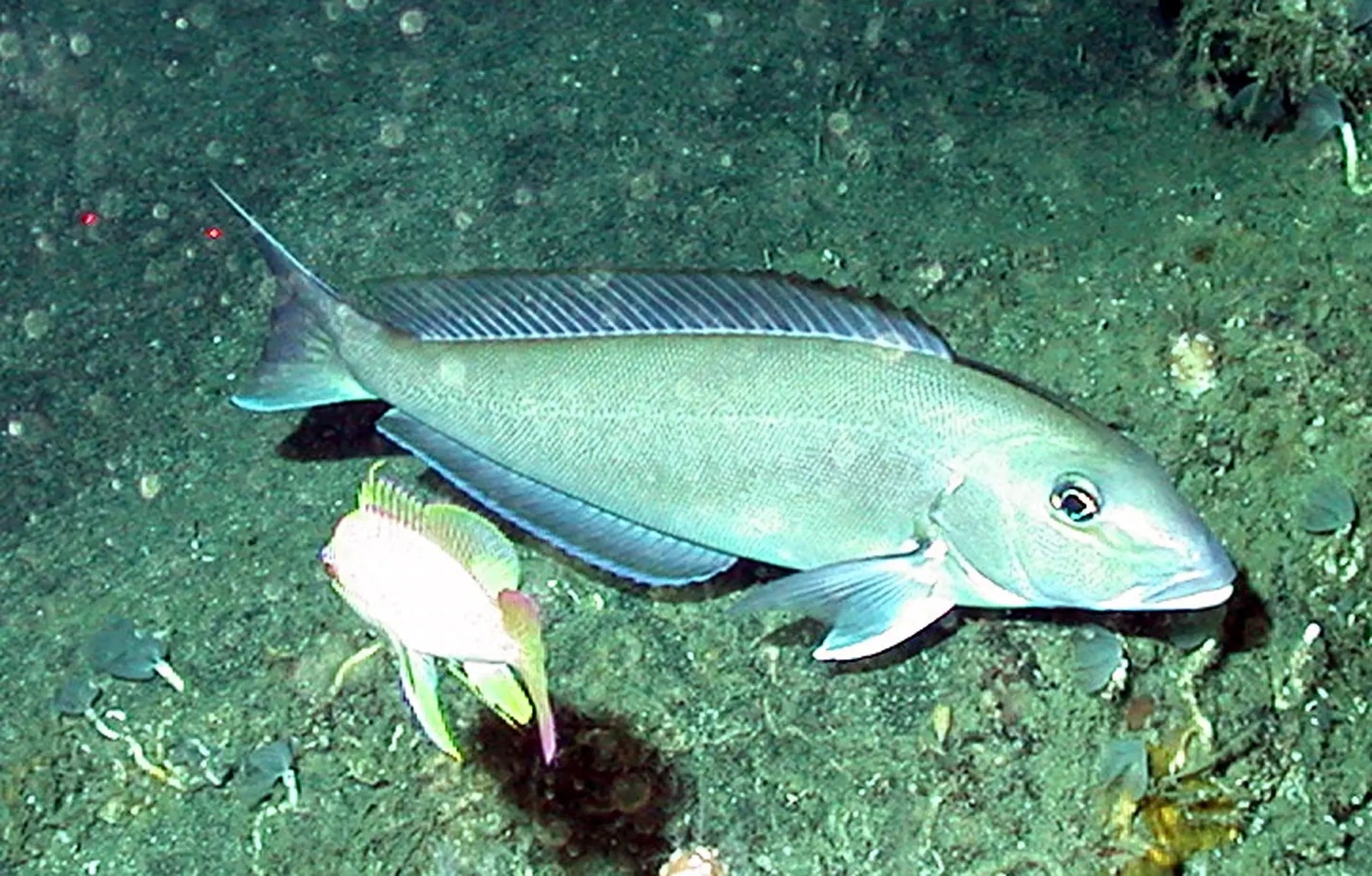This popular fish, especially in Poland, has long been the most available and cost-friendly option for shoppers looking for a good deal. However, a recent study discovered that there is a toxic substance in this dinner choice.
While pangasius is still at the top of the list of the most infamous fish with high contents of toxins, tilapia is quickly climbing the ranks thanks to heavy metals in the waters it is found in.
The Unhealthy Heavy Metals in Tilapia

A recent study from the Sea Fisheries Institute – National Research Institute (via Essanews) discovered the presence of an unhealthy level of substances in marine and farmed fish. The researchers behind the study found the species imported from Vietnam and China had a higher level of heavy metals compared to other fish.
In tilapia meat, the researchers discovered that there was a high concentration of lead compared to the other fish in the study. But that’s not the only issue with the fish.
Other Issues With Tilapia

The researchers also discovered that tilapia also contained mercury and cadmium. However, these levels of heavy metals are much lower compared to the levels of lead.
On top of all the levels of metals in the fish, scientists from Wake Forest University have found that the ratio of omega-3 and omega-6 fatty acids in tilapia meat is very unfavorable for consumers, and could lead to asthma, heart disease, and joint inflammation.
The Safest Tilapia to Eat

Tilapia is naturally found in Africa, but the ones that often end up in our grocery stores come from farms in polluted waters of Asia. Tilapia farms also exist in Europe, and these fish have been found to have low levels of mercury contamination.
These fishing farms, however, have become a growing concern for researchers who believe that they contribute to climate change.
Fish to Watch Out For

The marine environment has been turning a blind eye until recent years. Researchers have discovered that the pollution in the waters has largely affected the number and quality of fish that we catch and consume.
While knowing where your fish comes from, there is a list of fish that you should know about before purchasing them at your local grocery store.
The Increasing Levels of Mercury in Fish

Mercury in seafood has been a large concern for many. The National Oceanic and Atmospheric Administration (NOAA) conducted a study between 2010 and 2016 to identify the location of high mercury in fish in the Gulf of Mexico.
Apex predators and pelagic species are typically at the top of the list, but some outliers will make you pause before you eat them.
Golden Tilefish

Located on the East Coast of the US and the Gulf of Mexico, tilefish, a colorful fish with green, yellow, and white markings, have been an essential part of diets as its flavor is reminiscent of lobster or crab.
However, the golden tilefish found in the Gulf has almost eight times the mercury content of the same species found in the Atlantic.
Gulf Marlin

An apex predator that consumes numerous smaller species for its dietary needs is the marlin. While this predator can be a tasty meal, marlins contain a high level of mercury that is dangerously high levels for human consumption, according to Scientific American.
However, blue marlin, which is found in the Pacific Ocean, is considered a “smart seafood choice” by NOAA as it doesn’t suffer from overfishing. The Gulf marlin is the fish that should give you pause.
Escolar

Escolar is another commonly eaten fish that should give you pause. This incidental bycatch from the tuna fishing industry has been on restaurant menus since the 1990s often rebranded as “white tuna.” However, there is a pretty big issue with this fish.
According to California Sea Grant, humans should only eat 6 ounces of escolar in one sitting because it has high levels of purgative properties.
Bluefin Tuna

Prized bluefin tuna is a treat for many. Both the Pacific and Atlantic bluefin populations are on the decline as they are overfished, and most people are turning toward farmed bluefin to make their sushi or upcoming dinner.
While there is nothing wrong with bluefin tuna, they are heavily overfished, putting their population at risk.
Farmed Salmon

Salmon is one of my favorite fishes to eat, whether I am at home or enjoying my local sushi joint. And I’m not alone. The National Fisheries Institute reports that salmon is the second most consumed seafood in the US.
However, our salmon typically comes from farms, which could pose problems for the fish. The best practices for farm-raised salmon come from indoor facilities with recirculating water systems that treat the wastewater. When you are looking to purchase salmon, it is recommended to purchase from farms located in Nova Scotia, areas of Chile, British Columbia, and other UK regions.
Cod

Cod is another heavily consumed fish across the world, but the fish population has been struggling since 1992 when the North American Atlantic cod population collapsed. Overfishing, intrusion from longer-ranging fishing boats, technological advances in techniques, and fishery mismanagement lead to the collapse.
While the cod population could bounce back soon, consumers should look for sustainably sourced cod when looking to purchase fish for dinner.
Fish Isn’t the Only Toxic Food

Unfortunately, these fish are not the only popular foods to contain heavy metals that can impact your overall health.
An eight-year study conducted by researchers at George Washington University and ConsumerLab, a company that tests and evaluates health foods and supplements, found that some chocolates contain heavy metals.
Chocolate Has High Levels of Heavy Metal

The test found that certain dark chocolates and cocoa products contain amounts of lead and cadmium that are above California’s strict regulations on heavy metals.
“The amount of lead that was found, in general, was not alarming,” said Leigh Frame, the co-lead author of the study and the executive director of the Office of Integrative Medicine and Health at George Washington University.
Don’t Cut Chocolate Out Yet

This doesn’t mean that your sweet tooth will have to suffer from cutting out these cocoas and dark chocolate. Frame notes that the level of heavy metal found in chocolate may not have a massive effect on most consumers.
Some studies suggest flavonoids found in dark chocolate may lower the risk of heart disease and high blood pressure.
Heavy Metals Effect on You

Small exposures to heavy metals, and other exposures in an individual’s diet, could add up to a devastating effect. “But most people probably don’t have a great handle on what their heavy metal exposure is,” Frame said.
A poor, heavy-metal diet could amount to higher blood lead levels over time. “And that is something that we all need to be aware of,” Frame said.
Testing Chocolate

The study from George Washington University follows the findings of a 2022 investigation by Consumer Reports that detected cadmium and lead in all the 28 dark chocolate bars tested.
A follow-up test of 48 cocoa-containing production in 2023 also found concerning levels of cadmium and lead.
The FDA Responds

In response to the questions about the study, the FDA spokesperson noted that “while the presence of cadmium and lead in chocolate has been the subject of considerable media attention, experts from around the world have found that chocolate is a minor source of exposure to these contaminants internationally.”
But why are these exposures to heavy metals in our favorite sweet? There is a reasonable explanation for this.
The Benefit of Chocolate

People have long used chocolate as a medicine to treat fatigue and improve digestion. The studies surrounding chocolate suggest that flavonoids found in cocoa help lower the risk of heart disease, high blood pressure, and diabetes.
Not all chocolates are created equal. The study stresses that some chocolates, like darker chocolates, offer higher amounts of cocoa and more flavonoids.
The Risk of Exposure

Freepik
Chronic exposure to lead and cadmium causes kidney dysfunction and other health problems.
Infants, young children, and pregnant people are vulnerable to these health problems caused by the heavy metals. Prolonged lead exposure in early development increases the risk of learning disabilities.
Eliminating Lead from Diets

Luckily, the US has been striving to eliminate lead from our diets. According to the FDA< young children in the country are eating and drinking far less lead than they did decades ago.
For comparison, children were consuming about 43 micrograms per day in 1980. Today, children only consume about 1 microgram per day.
The FDA Watches Out for Consumers

Just because lead consumption is down does not mean that the FDA isn’t concerned about food products having lead contamination. The FDA has warned of “extremely high” levels of lead detected in three brands of applesauce puree pouches.
The agency continues to send public health alerts that recommend when consumers should stop using and dispose of certain products that have led to contamination.
The Kids Are Alright

Frame said the good news is that kids don’t generally like eating foods that could contain high levels of lead. For example, dark chocolate is not a favorite among children because the taste is too bitter.
On average, many children are not big fish eaters, even though it can be one of the healthiest things they can eat.
Don’t Be Afraid to Buy

“I would not want someone to be afraid of chocolate. That would be the worst thing that could come out of the study to me,” she said. “Frankly, it’s a small contributor to our diet.” This note could also apply to fish that contain heavy metals like those listed above.
The best way to avoid harming your health is by looking into what is in the products you buy from your local grocer. Knowing what you’re consuming is the best way to advocate for your health.








































